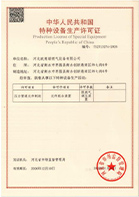
Nov . 08, 2024 18:36
Back to list
natural gas pressure reducing valve
Understanding Natural Gas Pressure Reducing Valves
Natural gas is a vital energy source that powers homes, industries, and vehicles around the world. To ensure safe and efficient use, controlling the pressure of natural gas during its distribution is essential. This is where natural gas pressure reducing valves (PRVs) come into play. These mechanical devices play a crucial role in managing gas pressure within pipelines, ensuring that the gas supply remains safe and reliable.
What is a Pressure Reducing Valve?
A pressure reducing valve is a device designed to maintain a constant output pressure from a higher inlet pressure. In the context of natural gas systems, these valves control the pressure of gas flowing from the high-pressure mains to lower-pressure distribution lines, making it safe for domestic and commercial use. PRVs are engineered to automatically adjust the size of the opening through which the gas flows, thereby regulating the outlet pressure despite variations in inlet pressure.
Importance of PRVs in Gas Distribution
1. Safety High-pressure natural gas can pose significant risks, including explosions and pipeline ruptures. PRVs mitigate these risks by ensuring that the gas is delivered at safe operating pressures. This is particularly important in residential areas, where gas appliances are sensitive to pressure fluctuations.
2. Efficiency Maintaining consistent pressure helps improve the efficiency of gas appliances. For instance, gas stoves, heaters, and boilers are designed to operate optimally at certain pressure levels. A PRV ensures the pressure remains within a specified range, promoting energy efficiency and reducing waste.
3. Equipment Protection Various devices and appliances connected to the gas supply can become damaged if subjected to high pressures. PRVs help protect such equipment by preventing overpressure situations that could lead to costly repairs or replacements.
How Do PRVs Work?
PRVs operate using a simple yet effective principle. When gas enters the valve, it encounters a diaphragm or piston that senses the outlet pressure. This component is connected to a spring that regulates the valve opening. As the pressure increases, the diaphragm pushes against the spring, which reduces the opening size and slows the flow of gas. Conversely, if the outlet pressure decreases, the spring expands, allowing more gas to pass through.
natural gas pressure reducing valve

Most PRVs come with adjustment mechanisms, enabling users to set the desired outlet pressure according to specific system requirements. This adjustability is vital for various applications, from residential heating to industrial processes.
Types of Pressure Reducing Valves
There are several types of PRVs, including
1. Direct-acting PRVs Commonly used in residential applications, these valves are simple and reliable. They respond directly to changes in pressure without the need for additional components.
2. Pilot-operated PRVs These are typically used in larger systems where more precise control is necessary. They use a pilot valve to manage the pressure of the main valve, providing better performance in dynamic conditions.
3. Balanced pressure PRVs These are designed to maintain consistent pressure even with varying inlet pressures. They are often utilized in critical applications requiring high reliability.
Maintenance and Inspection
To ensure optimal performance, regular maintenance and inspection of PRVs are essential. Operators should check for any signs of wear or damage, ensure that adjustments remain within specified limits, and periodically test the valve’s performance. Environmental factors, such as temperature fluctuations, can also affect valve operation, making routine checks a crucial part of any gas management plan.
Conclusion
Natural gas pressure reducing valves are essential components in the safe and efficient distribution of natural gas. Their role in regulating pressure not only safeguards against potential hazards but also enhances the performance of gas-powered appliances. By understanding how these valves work and their importance, users can appreciate their value in daily energy consumption and safety protocols. As natural gas continues to be a cornerstone of energy supply for many sectors, the significance of effective gas pressure management remains paramount.
Next:
Latest news
-
Safety Valve Spring-Loaded Design Overpressure ProtectionNewsJul.25,2025
-
Precision Voltage Regulator AC5 Accuracy Grade PerformanceNewsJul.25,2025
-
Natural Gas Pressure Regulating Skid Industrial Pipeline ApplicationsNewsJul.25,2025
-
Natural Gas Filter Stainless Steel Mesh Element DesignNewsJul.25,2025
-
Gas Pressure Regulator Valve Direct-Acting Spring-Loaded DesignNewsJul.25,2025
-
Decompression Equipment Multi-Stage Heat Exchange System DesignNewsJul.25,2025

